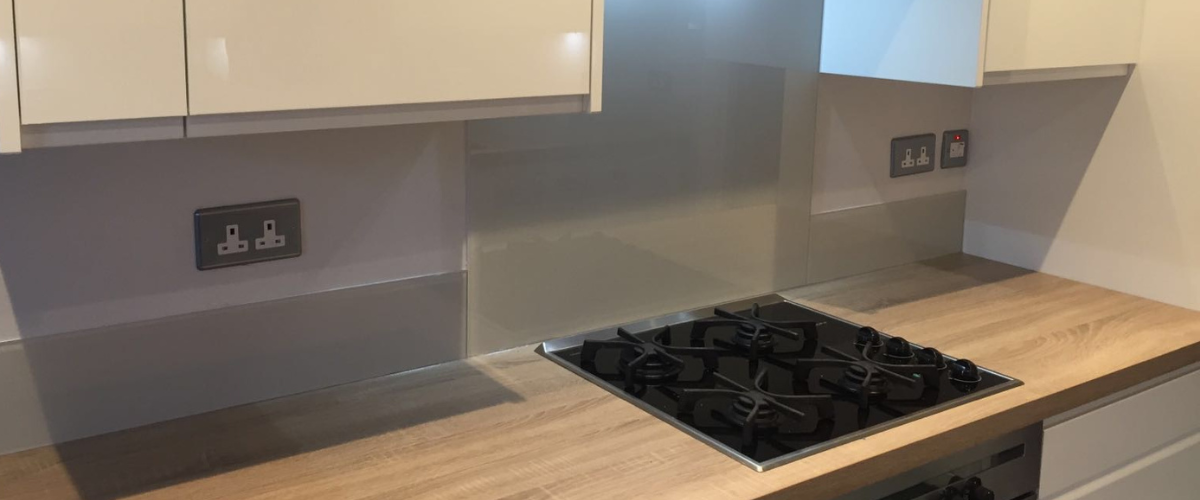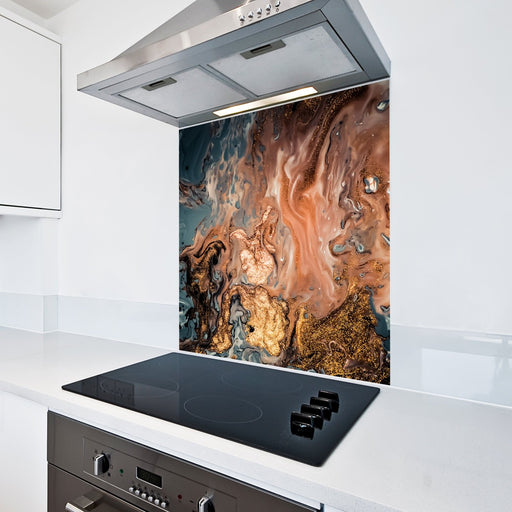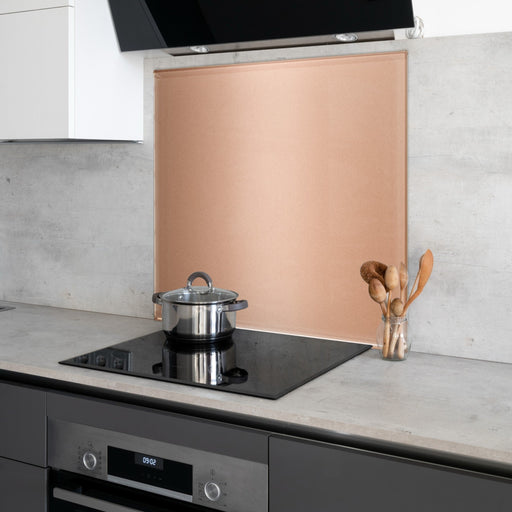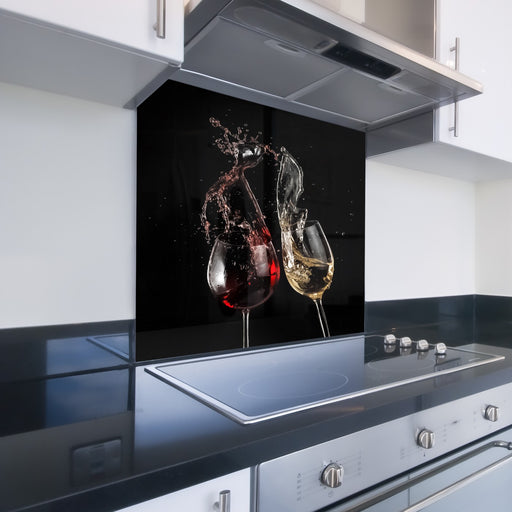Call 020 8500 1188

Upstand vs Glass splashback: kitchen design essentials
When it comes to kitchen design, protecting your walls from dirt and grime build up is essential. There are several options available to homeowners, including upstands and glass splashbacks. In this article, we will outline the differences between upstands and glass splashbacks and the advantages and disadvantages of each.
If you're interested in learning more about glass splashbacks, we have already written extensively about them.
What's the difference between an upstand and a splashback?
Upstands and splashbacks are both used to protect kitchen walls.
But upstands are typically smaller (a few inches in height) and run along the bottom of the wall where it meets the countertop.
Splashbacks, on the other hand, cover a larger area of the wall, often extending from the countertop all the way up to the cabinets to cover the entire surface behind the cooker or along the counter.
Upstands are generally less expensive than splashbacks, and they can be a good option if you're on a tight budget. They're also easier to install than splashbacks, which require more precise measurements and cutting.
However, splashbacks offer more comprehensive protection for your walls and are available in a wider range of materials and finishes. They're also easier to clean than upstands, which can collect dirt along their edges.
What materials are available for upstands compared to splashbacks?
Both upstands and splashbacks are available in a variety of materials, including glass, tile, and stainless steel.
Glass splashbacks are a popular choice because they're easy to clean and come in a wide range of colours and designs. Tile splashbacks can also be a good option, as they're relatively inexpensive and can be customised to fit any style of kitchen. Stainless steel splashbacks are durable and easy to maintain, but they can be more expensive than other options.
For upstands, materials like laminate, acrylic, and tile are common choices. Laminate upstands are affordable and easy to install, but they're not as durable as other options. Acrylic upstands are a good choice for those who want a more modern look, but they can be more expensive than laminate. Tile upstands can be a good option if you want to match your backsplash or countertops, but they require more maintenance than other materials.
What types of kitchens are upstands best suited to?
Upstands are a good choice for any type of kitchen, but they may be particularly well-suited to smaller ones. Because upstands are smaller than splashbacks, they take up less visual space and can help make a small kitchen feel larger. They're also a good option if you want to create a more streamlined look in your kitchen.
What type of kitchens are splashbacks best suited to?
Splashbacks also work in any type of kitchen but may be particularly well-suited to larger spaces or where lots of cooking is done, and the risks of splashes higher up the walls are greater. Plus, because splashbacks cover a larger area of the wall, they can help create a focal point in a kitchen. They're also a good option if you want to add colour or printed patterns to your kitchen design.
Advantages of an upstand vs a splashback
The main advantage of an upstand over a splashback is cost. Upstands are generally less expensive than splashbacks, which can be a good option if you're on a tight budget. Upstands are also easier to install than splashbacks, which require more precise measurements and cutting.
Advantages of a splashback vs an upstand
The key advantage of a splashback over an upstand is comprehensive protection for your walls. Splashbacks cover a larger area of the wall and provide better protection. They're also easier to clean than upstands, which can collect dirt along their edges. Additionally, splashbacks offer more design options and can be customised to fit any kitchen style or colour scheme.
Whatever your choice, find the best kitchen solutions from EGW
In conclusion, when it comes to kitchen design essentials, choosing between upstands and splashbacks depends on your budget, style preferences, and the size of your kitchen. While upstands may be a good option for smaller kitchens or those on a tight budget, splashbacks offer more comprehensive protection and design options.
At EGW, we understand the importance of having a functional and stylish kitchen. That's why we offer a wide range of glass splashbacks, in clear toughened glass, painted glass, and printed glass. Shop our splashbacks range or contact us today to learn more about our kitchen products and services.Products you might like
Bespoke Painted Glass Splashbacks
From6mm Toughened Printed Kitchen Glass Splashback - Luxury Abstract Marble Fluid 134
From6mm Toughened Printed Kitchen Glass Splashback. If you would like to upload your own image or request a bespoke size call our dedicated team on...
View full details6mm Toughened Printed Kitchen Glass Splashback - Copper Marble 105
FromProduct Information6mm Printed Toughened Marble Copper Glass Splashback If you would like to upload your own image or request a bespoke size call o...
View full details6mm Toughened Painted Kitchen Glass Splashback - Copper (Metallic Shimmer)
From6mm Toughened Painted Kitchen Glass Splashback. If you would like a different colour or a bespoke size call our dedicated team on 020 8500 1188 for...
View full details6mm Toughened Printed Kitchen Glass Splashback - Wine 360
From6mm Toughened Printed Kitchen Glass Splashback. If you would like to upload your own image or request a bespoke size call our dedicated team on 020...
View full details





